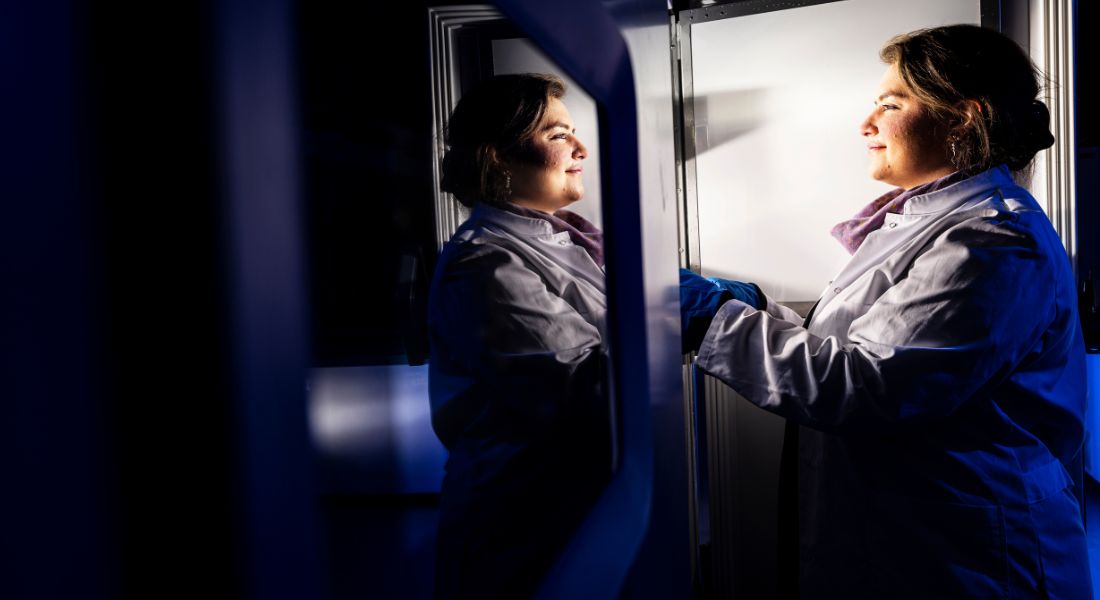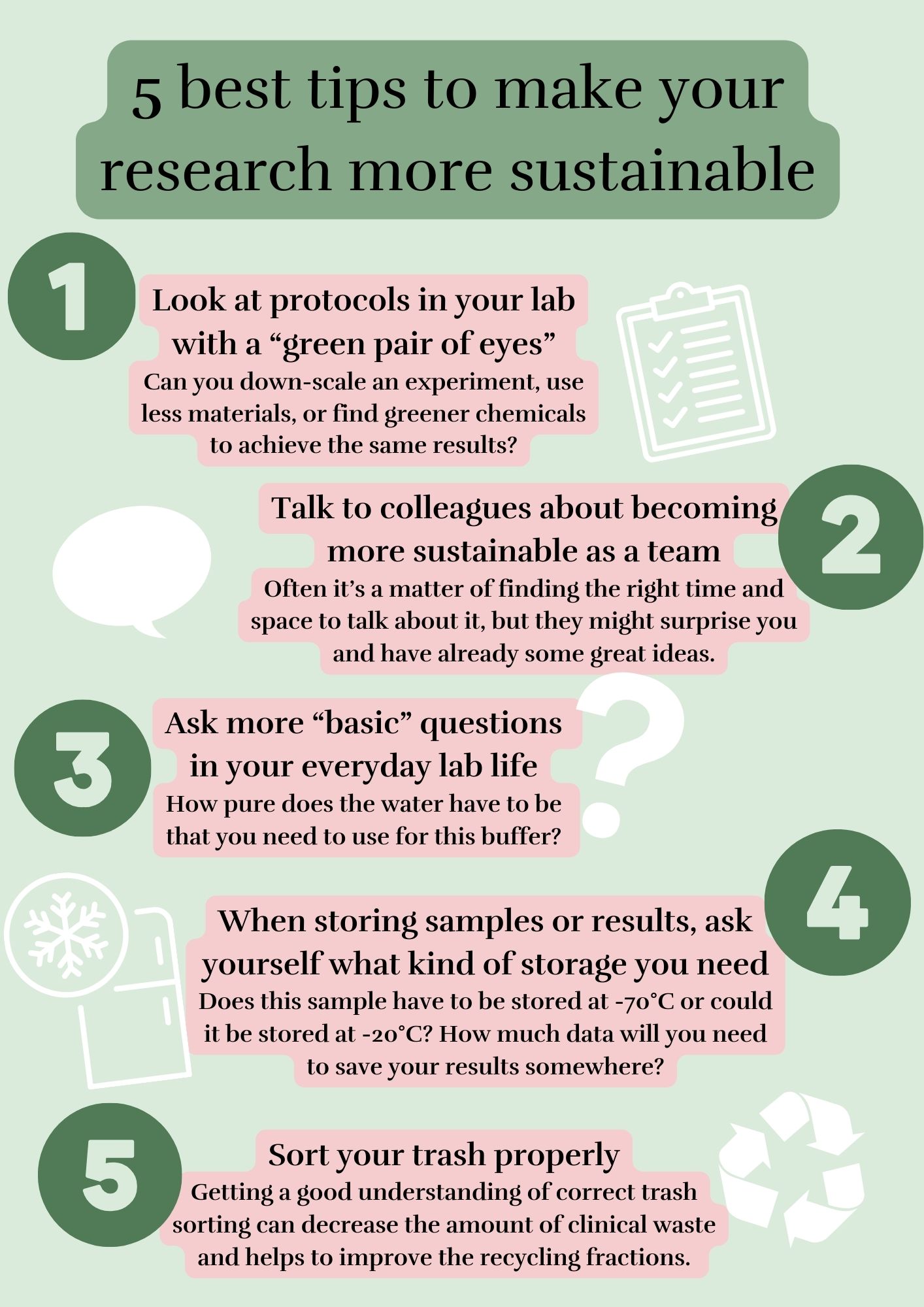A grassroot movement fighting for sustainability grown big
CPR Goes Green started as a grassroot initiative at CPR almost four years ago. Now the initiative has spread to many places at SUND and the “Goes Green”-teams are learning from each other’s initiatives to help labs to become more sustainable.

Almost four years ago Nikoline Borgermann had the idea to start a grass root initiative, promoting a green transition within laboratories. Early onwards Ann Schirin Mirsanaye and other like-minded people at the Novo Nordisk Center for Protein Research (CPR) joined in and CPR Goes Green was founded with the goal to combine top notch science with sustainability.
”We formed a little grassroot initiative and had different people joining us. PhD students, postdocs, lab technicians and administrative staff got together, and our main goal was to look into topics of sustainability relevant for our everyday (lab) work life, including the area of trash sorting inside the labs as well as the kitchens and offices,” says Ann Schirin, who has been the chair of CPR Goes Green for three years.
Now the sustainability initiative is not only present at CPR but has grown to other places at SUND as well. CBMR, BRIC and CFB at DTU started “Goes Green”-teams as well as, similar grassroot initiatives at GLOBE and the Danish Cancer Society.
“Seeing so many people getting engaged in grassroot initiatives and being interested in putting sustainability in science on the agenda motivates me a lot to continue the work we’ve been doing,” says Ann Schirin.
700 people from all around the world
“We thought ‘let’s not reinvent the wheel’ but try to connect with each other and learn from others, for example when it comes to creative ideas of re-using consumables in the labs,” says Ann Schirin.
That made CPR Goes Green together with Nikoline Borgermann (Avasustain) the driving force to organize the first “Sustainable Research Symposium” in Scandinavia. The goal was to create an international community of people interested in improving the ecological footprint of research and learning more about practical, hands-on tips to help people making a green impact in their labs.
“Due to Covid the symposium was only online, but the great thing about it was that we didn’t have a limitation for people to sign up. At the end we had 700 participants who joined us during the symposium from all around the world. That was breathtaking, because we didn’t expect to reach that many people,” Ann Schirin says and adds:
“I think a lot of people get frustrated in science when thinking about the huge environmental impact wet labs have. Our work is important and necessary, but we need to get better and become role models at reducing the carbon footprint of our work. The symposium enabled the opportunity to create a community of scientist who would like to do better and be more sustainable. “.
The idea of the symposium was to create a regular platform where once a year scientist could come together and get inspired and motivated by and from each other.
“We therefore had the vision of creating a “travelling symposium” which meant that every year another green group within Europe could organize it,” says Ann Schirin.
The second symposium in 2022 was organized by a Dutch grassroot initiative and held in a hybrid format. CPR Goes Green and Nikoline Borgermann helped organizing the symposium by handing over an organization pamphlet, to share their knowledge and help the Dutch group to run into similar difficulties.
A code of conduct was created for the symposium to ensure that it stays a “free-of-charge”-event for students, and to ensure that the creative spirit of the symposium is not compromised by for example a company taking over.
Not a green police
From the beginning it was important for the Goes Green-team to include the rest of the center. They sent a questionnaire asking everybody if they had anything they wanted the team to look into.
“One important part was to ensure early onwards, that we are not functioning as a “green police”, but rather include everyone at the center into to process of become more sustainable. We always tried to display ourselves as a group of people who are interested in sustainability and are happy to look into certain topics to find good solutions,” Ann Schirin says.
“We’ve received a great amount of responses, showing that a lot of people are interested in the topic and open to new ideas. A lot of suggestions were focusing on trash sorting in the labs and in the kitchens,” says Ann Schirin and adds:
“We started to look into sorting solutions and became the front runners in helping to setup a functional trash sorting system in the kitchens and in the labs including the design of signs and tables to make sorting as easy as possible for every lab member, which ended up having an impact on a lot of labs here at SUND and other departments.”
Join LEAF
LEAF helps to professionalize and increase the impact of all the small things labs already do around the university and helps to raise important questions, which need to be addressed if science wants to become more sustainable.
Ann Schirins best advice is therefore to enroll into the LEAF certification program.
“LEAF offers a great number of starting points for a green transition in a lab. The list of criteria’s for the different levels of certification (bronze, silver and gold) gives a lot of inspiration and functions as a great resource platform, providing a lot of resources that everybody at the faculty can use,” says Ann Schirin.
The LEAF program awards labs with bronze, silver or gold depending on the level of sustainability of the lab.
“It’s easy to join LEAF and it might help people at different departments to find like-minded colleagues that can support each other,” she says.

